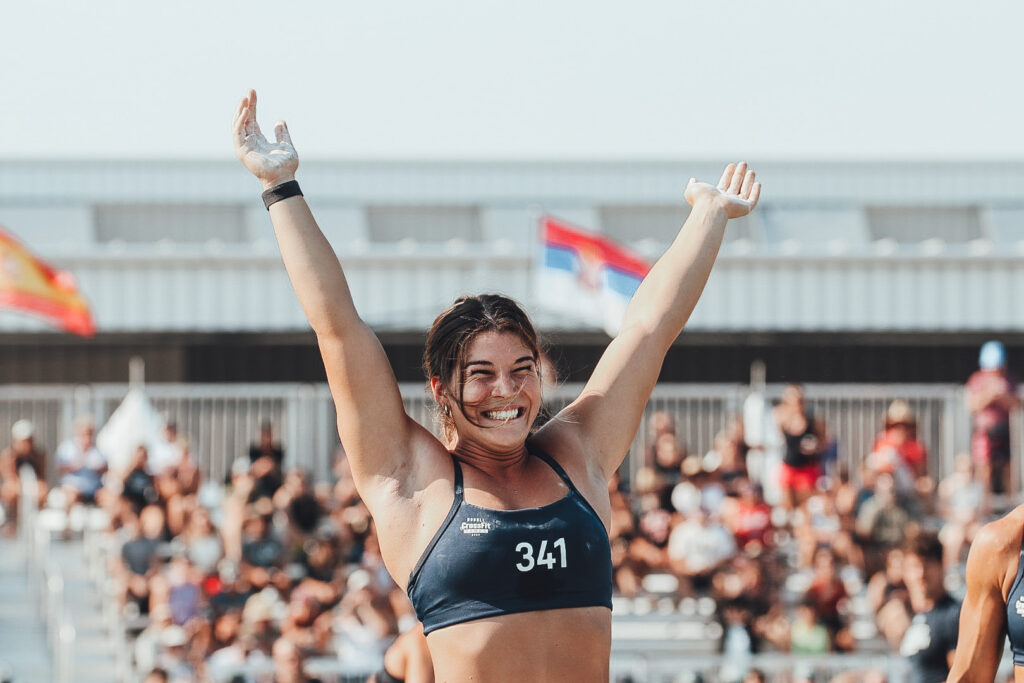
3 Common Fitness Terms to Know
Written by Kisha Wilson
You might hear coaches or fellow athletes throw around some of this fitness jargon. It’s a good idea to know what these words mean and how you can relate to or use them to or use them in your fitness journey.
Common Fitness Terms
Progressive Overload
Workouts or lifts that increase in difficulty over time. Progressive overload is a crucial concept for any athlete looking to improve their strength and conditioning — so that’s pretty much all of us.
You can track this in a lot of different ways. Most obviously increasing the weight you lift or the number of reps you perform for a given weight from week to week. But it also applies to skill sets and time domains like distance or duration of the workout. You see this a lot! Whether you realize it or not, each week, especially in Olympic lifting class, we are upping the ante by adding more weight to the bar!
Be aware that tendons take time to catch up to strength gains so it is important to understand how we adapt to progressive overload to avoid injury. If you’re in a situation where you either can’t, or don’t want to increase the weight on your bar, there are other ways you can still use progressive overload to increase your strength without increasing load.
By consistently challenging your body with progressively harder workouts, you can make massive strength gains over time. It pays off to know how to use progressive overload properly, since you can basically keep doing so throughout the life of your athletic career.
Hypertrophy
defined as “the enlargement of skeletal muscle fibers in response to being recruited to develop increased levels of tension”, as seen in resistance training.
We achieve this by training in the 8-12 rep range at 60-80% of your 1RM.
When working out your muscles exert a resistance action that produces small tears in the muscle fibers. Then when your muscles are cool, they repair themselves and strengthen their tissue to protect against further damage (adaptation). So you really are not building muscle in the gym, you’re breaking it down and that’s why RECOVERY is so important, because that’s when the real magic happens. Which also means we need to FUEL our recovery with nutrition but that’s a whole different blog.
As we adapt to certain exercises, weights, sets, reps is why adding in something like progressive overload is super effective in gaining muscle, strength, endurance, mobility, and anything else you can train.. Other ways we can achieve this are by things we do at Invictus all the time. For example changing tempos and rest periods and different styles of loading.
RPE/ Rate of Perceived Exertion
RPE stands for Rate of Perceived Exertion, a good definition is as “a way of personally rating how hard you’re working. In most cases, RPE uses a simple 1-10 scale, where 1/10 RPE is very easy, minimal effort and 10 being the hardest it can be or your max effort. You can help gauge this number by how hard you’re breathing, what your heart rate is, how sweaty things are getting or how fatigued you feel.
We sometimes use this instead of percentages, especially if we don’t know what our 1 rep max is. I like to think of RPE being very close to percentages, like 50% would be a 5 on the PRE scale, 80% would be an 8…etc. So you can interchange these as needed! Or, you can also use this based on how you’re feeling that day. For example, If you come into train already feeling sore or beat up, or if you’re stressed at work, you should keep it under a 6 RPE to accommodate for this. Below is a chart to help identify what RPE might look and feel like.
Hopefully these definitions and tips will assist you in understanding and manage your workouts in a way that most productively helps you attain your personal needs and fitness goals.